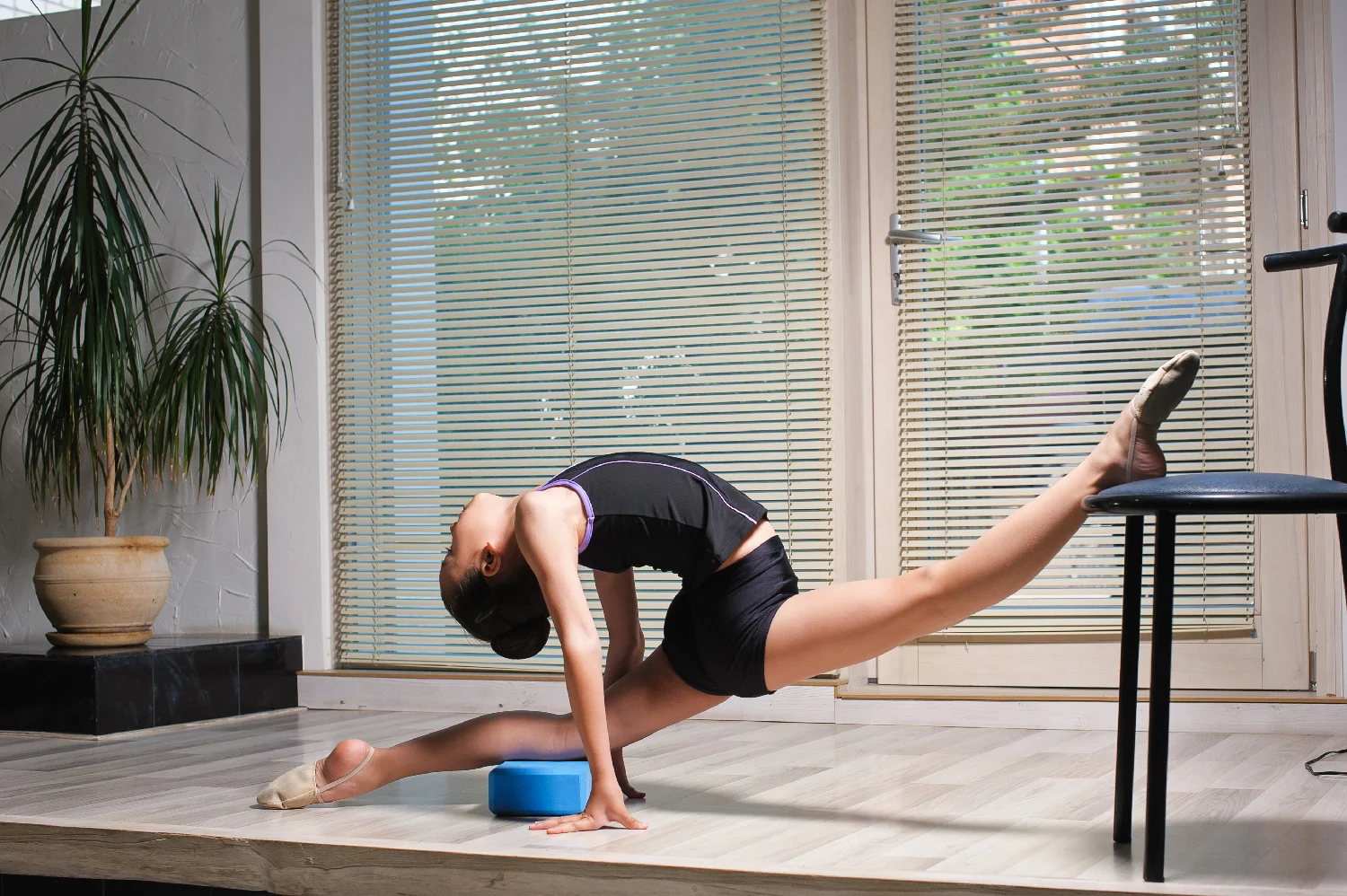The risk of over stretching in splits
You see it on Instagram: A young dancer lounges casually in an over-split #OverSplits position posing for the photo. One foot is propped up on a bed or a chair as her legs split well over 180 degrees.
Gentle reminder to dancers who do exactly this, hyper mobility is often a dancers worse enemy and these familiar Instagram poses may be doing untold damage
Recently, over flexibility has become the norm, with social media stacked with photos of dancers contorting themselves into all sorts of dangerous positions.
Do you need to be able to be hyper-flexible to achieve a professional dance career?
This is a matter of taste, but it's clear that at competitions, circus-like penchés and développés are being rewarded with medals, scholarships, and contracts. But can extreme stretching cause injuries down the line? Of course, it can, if done too much, too quickly.
What’s the risk of over-splits?
Dancers should stay well away and avoid overstretching in extreme positions at all costs! As well as loosening the ligaments that protect your dancers’ hips and knees, which by the way once done can’t be undone, In an over-split, you are pressing the femur bone into the acetabula at a damaging angle and with that much push, you can injure the labrum which can create a tear in the cartilage of the hips. Hypermobile dancers can take the joint through more than it is designed to do. Static stretching can cause joint destabilisation in hypermobile people.
But won’t being flexible help me progress as a Ballet dancer?
Ballet dancers need to jump high and turn as much as they need a high battement, which requires core strength. Flexibility does play a role but its not necessary to hold extreme positions because it's not functional for ballet.
Actually, overextended stretching can also have a negative effect on your muscle contraction, decreasing your ability to jump high and interfering with controlled landings. Stretching, extreme or not, should always be done with care.
It’s important for dancers to understand and remember the word before ballet is ‘classical’ and that’s what we are aiming to achieve in every movement.
Patience equals flexibility
There is a safer way to develop flexibility. It involves warming up, avoiding long over stretch holds. If you want to gain more flexibility, hold stretches for shorter periods but repeat more often throughout the week to safely lengthen the muscle.
The slower you build stretch the better it is for you.
If you can't take deep breaths, stop. Over flexible ballet dancers often struggle to find their limit and should avoid using gadgets, that can easily push the joint too far.
Flexibility is just one-half of the job that’s needed to lift your legs. Ballet classes or technique classes with conditioning on the floor for the abdominal and back muscles will build those muscles. Once the core is warmed up, the stretching that is naturally worked in class will assist the dancer’s abilities.
Dancers, parents and alike get fixated by what they see on Instagram, Facebook, or Youtube thinking that being over flexible is a sign of a good dancer but it simply is not. It is about placement, our approach to ballet is based on core strength and controlled movements not the increasingly gymnastic like demands.
While it's difficult not to be jealous of the latest Instagram post, you should focus on yourself as an individual. Ballerinas are becoming stronger, faster, and more coordinated. These things are just as important to focus on.
At En pointe, we offer technique classes, to guide and aid young dancers how to safely build strength and gain flexibility in a safe way. Little and often is key! Always ask a professional for advice, and look after your body, its the only one you will get! It’s a Marathon, not a race!
D.Keys RAD RTS CBTS
Principal and Founder of En pointe dance school, York.

